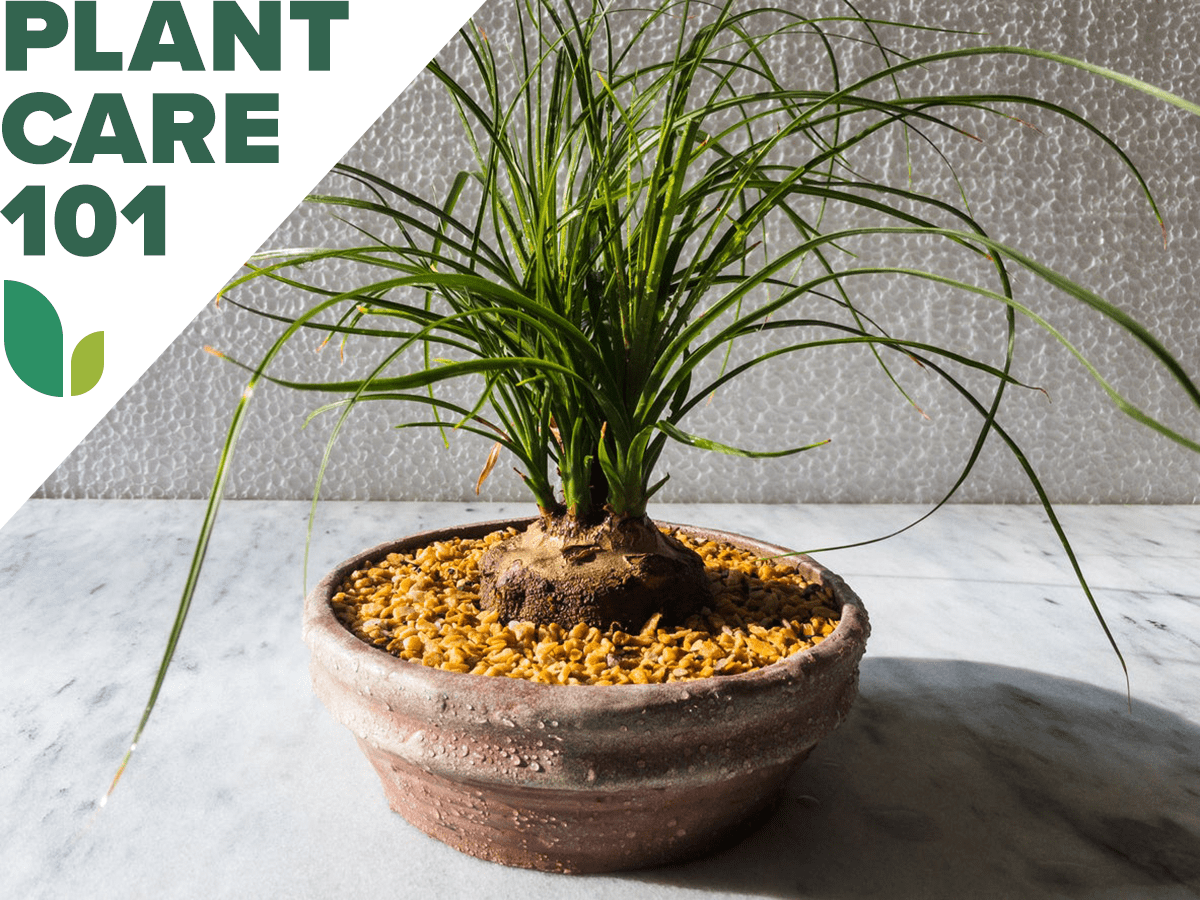

We may earn revenue from the products available on this page and participate in affiliate programs. Learn More ›
Despite its moniker, the ponytail palm—named for the bouncy spray of leaves atop its “head”—actually doesn’t belong among palm plants, being a semi-succulent species instead. Not a one-trick pony, it also offers an unusual water-holding caudex (stem root) at its base. That reservoir can turn as gray and cracked as a pachyderm’s foot, explaining this “palm’s” alternate nickname: elephant’s foot plant.
Due to the plant’s ability to supply much of its own moisture and its tolerance of low humidity, ponytail palm care is easy for most gardeners. However, those prone to overwatering their plants shouldn’t pony up for this one!
Ponytail Palm Care at a Glance
Common Name: Ponytail palm, elephant’s foot plant
Scientific Name: Beaucarnea recurvata or Nolina recurvata
Soil: Cactus potting mix
Light: Full or partial sun
Water: Low
Food: Balanced houseplant or cactus fertilizer
Temperature and Humidity: Average room temperature, low humidity
Propagation: Offsets or seeds
Safety: Nontoxic, sharp leaf edges
Ponytail Palm Characteristics
Hardy only to USDA Zones 10 and 11, the most common ponytail palm tree (Beaucarnea recurvata) can grow in the arid wilds of southeastern Mexico. Outdoors, it might reach more than 20 feet high with a caudex 5 or more feet across and leaves 4 feet long and 1 inch wide. It branches from the top of its trunk rather than from its base, and after it grows taller than 3 feet in 10 years or so, it might also produce panicles of flowers in summer and autumn. Those are cream-colored on male plants and pink on female ones, followed by clusters of red seed pods only on pollinated female plants.
However, an indoor ponytail palm isn’t likely to surpass 6 to 8 feet in height, nor to bloom. Still, its paunchy and puffy profile makes it one of the most interesting of indoor trees, and a mature specimen should be able to survive your 2-week vacation with ease.
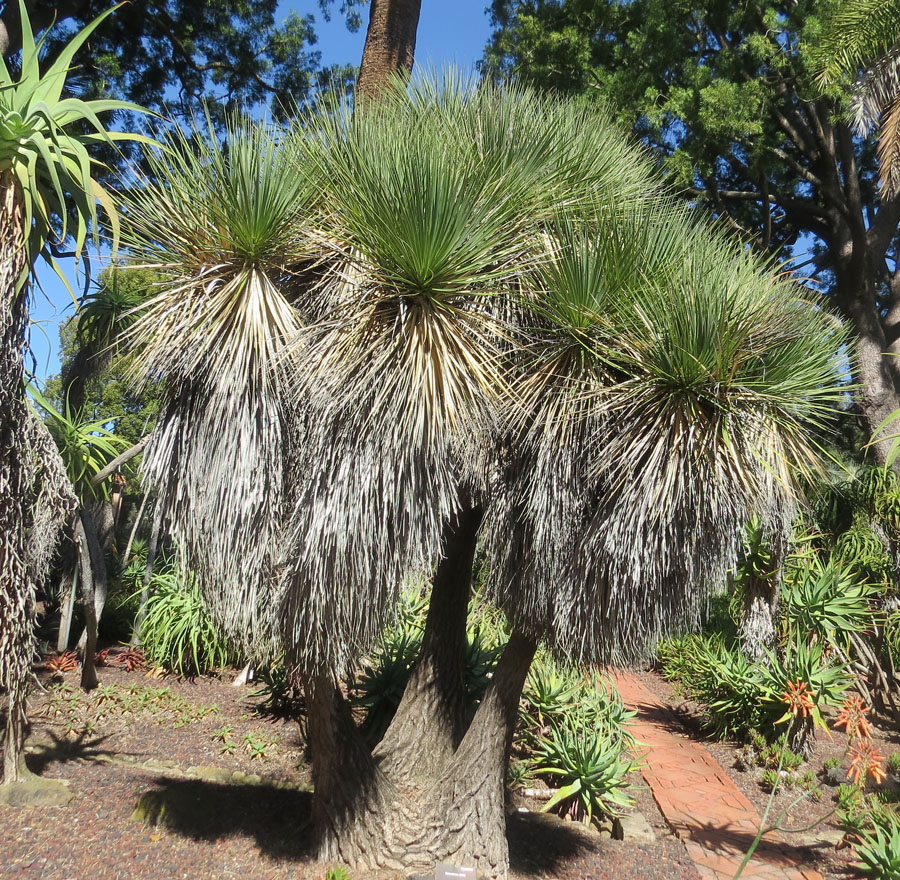
Types of Ponytail Palms
Although the Beaucarnea recurvata described above is the most widely sold ponytail palm, there are a few other species that, according to “Tropical Flowering Plants” by Kirsten Albrecht Llamas, share many of its characteristics with some minor differences.
- Beaucarnea guatemalensis: This plant is similar to B. recurvata, though it may grow taller—to 6 to 25 feet—with shorter 2-foot leaves that tend to droop rather than arch.
- Beaucarnea pliabilis: This species blooms in spring, has more erect panicles of flowers than B. recurvata does, and branches from its base rather than from the top of its trunk.
- Beaucarnea stricta: This ponytail palm only grows to about 20 feet outdoors, blooming in spring and summer and producing stiff 2½-foot leaves in a pouf that more closely resembles an Afro than a ponytail.
Selecting Soil for Ponytail Palms
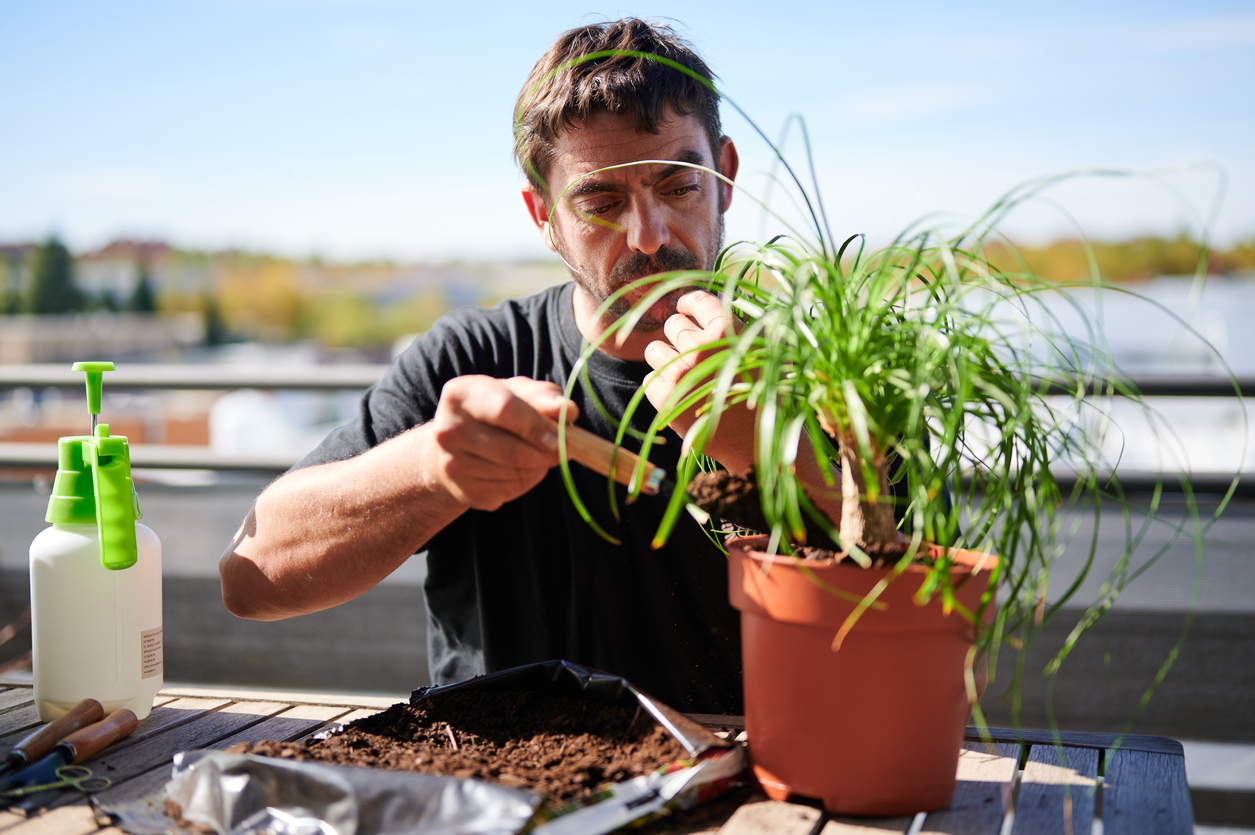
In its native Mexico, the ponytail palm grows best on the sides of rocky slopes. Since it tends to rot if forced to sit in water, provide it with a fast-draining soil such as cactus, palm, or citrus mix. Also, keep it “tightly” potted, with no more than 2 inches of soil between its base and the sides of a preferably terra-cotta or ceramic pot.
If you prefer to create your own mix for succulents, simply combine one part each of standard potting soil, perlite, and sand. Use a coarse sand, such as builder’s sand, rather than a finer sort.
The Right Light
The ponytail palm typically grows in full sun in the wild, so it would prefer a position near a south-facing window. However, it can tolerate the partial sun of an east- or west-facing window or even bright, indirect light, though it will be more prone to problems if treated as a low-light houseplant.
Don’t move the plant too abruptly from a dim position to a sunny position, though, or its foliage will burn. That includes if you move it outdoors during summer, since full sun outdoors is much brighter than full sun indoors. If you live in a wet climate, keep the plant under a porch roof rather than out in the open to limit the amount of water it receives.
RELATED: 3 Good Reasons to Dust Your Houseplants—and How to Do It
Watering Ponytail Palms
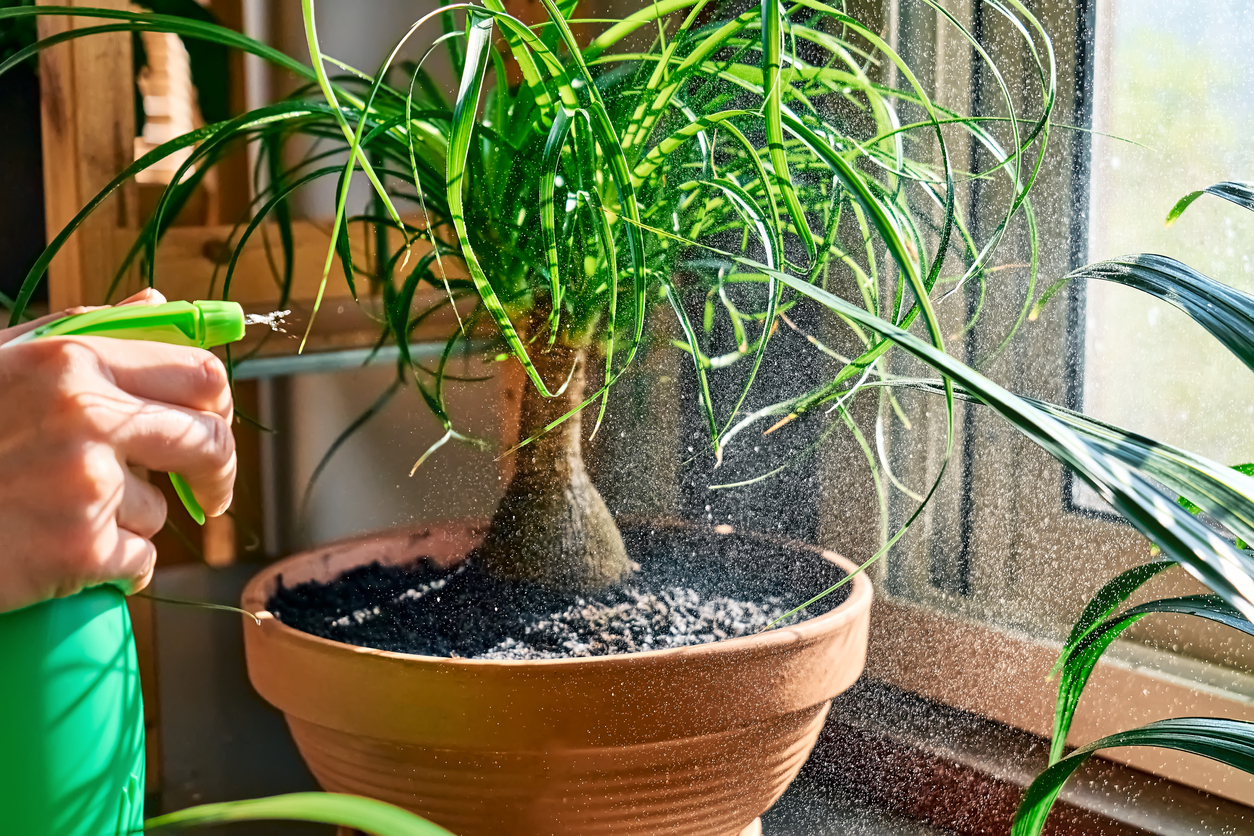
After you water a mature ponytail palm, wait until its soil is dry at least a couple of inches down before you water it again—perhaps once every 2 weeks during spring and summer. During autumn and winter, you should cut back on watering even more, giving the plant a drink only about once per month.
If its caudex begins to shrink or the tips of its leaves turn brown and brittle, water it more often. Ponytail palm seedlings that haven’t yet developed a water-storing caudex will require more frequent irrigation than mature plants do, but don’t allow their soil to become soggy. And always water from the side; never pour water directly into the plant’s fountain of foliage.
RELATED: What Does Root Rot Look Like in Houseplants?
Fertilizing Ponytail Palms
Since the ponytail palm hails from areas with less-than-fertile ground and grows slowly, it doesn’t require much nourishment. Also, a buildup of fertilizer salts in the soil can cause brown tips on the plant.
Therefore, a dose of a balanced houseplant food once or twice through spring and summer should suffice for ponytail palms as houseplants. If you prefer, use a product specially formulated for cacti and succulents instead, following the directions on its packaging. Don’t fertilize the plant during fall and winter when growth is at its lowest ebb.
Setting the Temperature and Humidity
The ponytail plant makes an easy-to-please houseguest since it actually prefers average indoor temperatures between 65 and 80 degrees Fahrenheit and low humidity. However, an occasional spray is OK, since it is likely to become dusty after a while and should have its foliage cleaned occasionally. Also, excessively dry conditions may render it vulnerable to spider mites.
Wait until all threat of frost has passed to plant a ponytail palm outdoors or move the container-grown plant outdoors during summer, and bring the houseplant back indoors before temperatures drop below 50 degrees Fahrenheit in autumn. Exposure to temperatures in the low 40s reportedly can cause yellowing foliage—even if those temperatures don’t dip to freezing.
Propagating Ponytail Palm
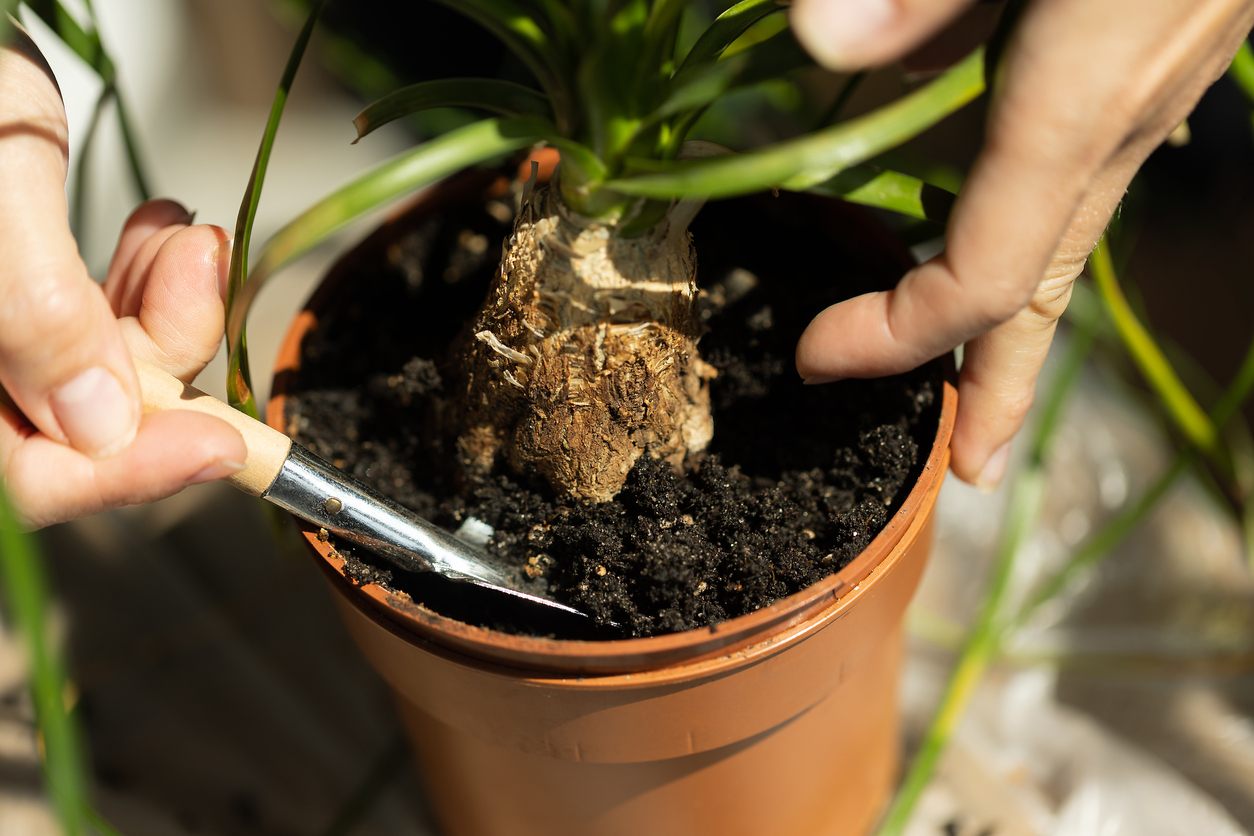
The plant occasionally makes offsets resembling mini plants on the sides of its caudex. To detach one of those, use a sharp knife to cut it free. Remove the leaves from the lowest one-third of the offset’s stem and allow it to dry for 24 hours or so before dipping its base in a rooting powder or liquid. Then pot up the offset in cactus potting mix, covering the bare lowest third of the stem with the mix.
To grow ponytail palm from seed, soak the seed overnight before sowing it in a damp and sterile seed-starting mix, barely covering it with the mix. If you keep the seeds at about 68 degrees Fahrenheit, they should sprout in 2 to 4 weeks.
Safety Considerations
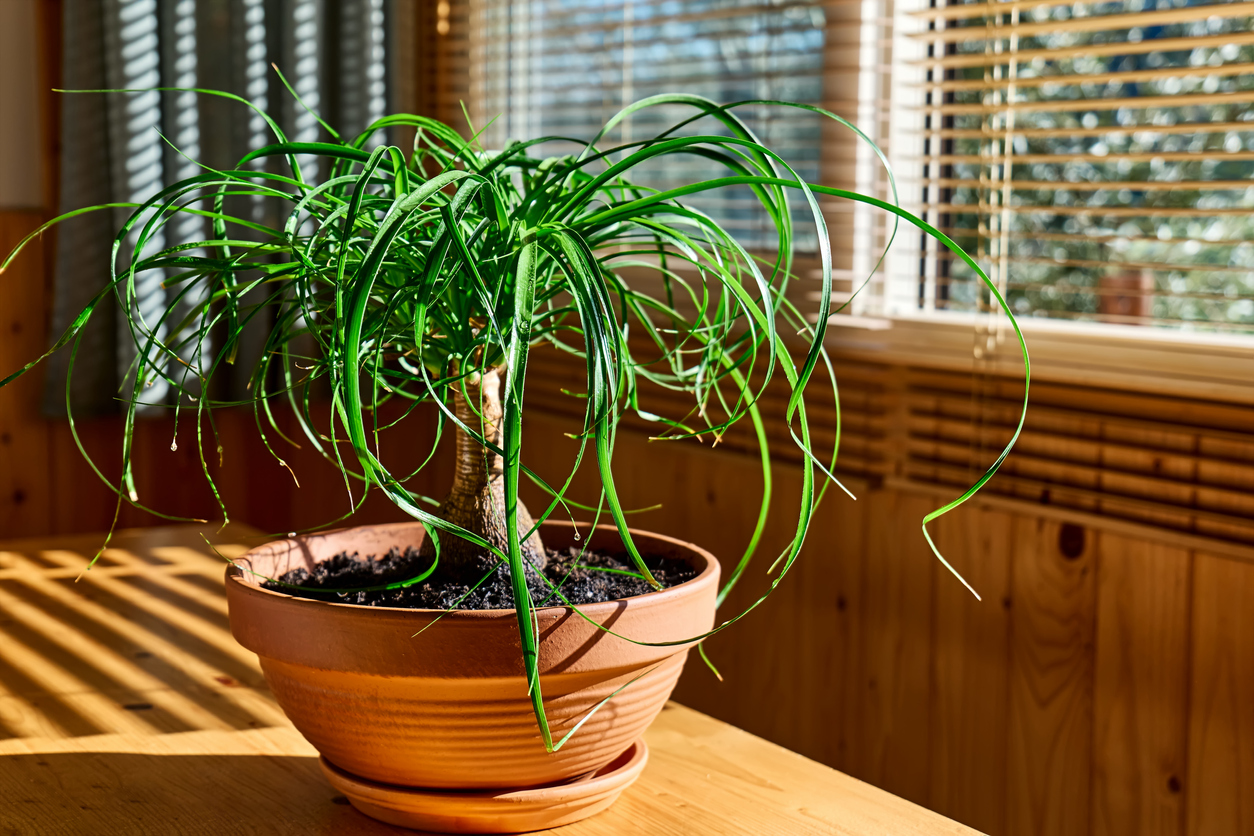
Although ponytail palms aren’t toxic to either people or pets, according to the University of Wisconsin Extension, the serrated edges of their leaves reportedly are sharp enough to cut skin if they are handled carelessly. For this reason, wear heavy gloves when working around them and warn children against petting these ponies! If you have a touchy-feely toddler, you might want to forgo the plant altogether.
Also, large ponytail palms in pots can be heavy, so don’t place them at heights from which their toppling could be dangerous.To avoid straining your back later, set the plants atop wheeled plant caddies while they still are small enough to be lifted easily.
Potential Pests and Diseases
The most common disease to afflict ponytail palm is root rot caused by overwatering. Signs of overwatering and possible rot include white mold atop the plant’s soil, yellowing leaves, and/or a mushy stem or mushy spots at soil level on the caudex. If the soft spots are small, the plant may be able to survive if you stop watering it. However, should the entire caudex feel pulpy, you probably will need to discard the plant.
The dry conditions under which ponytail palms must be kept sometimes invite spider mites, which are indicated by mottling on the foliage and webbing beneath it. To prevent or discourage those intruders, wash your plant’s foliage occasionally, preferably in a manner that doesn’t soak its center or soil.
RELATED: How to Inspect Houseplants So You Don’t Bring Home an Unhealthy or Infested Specimen
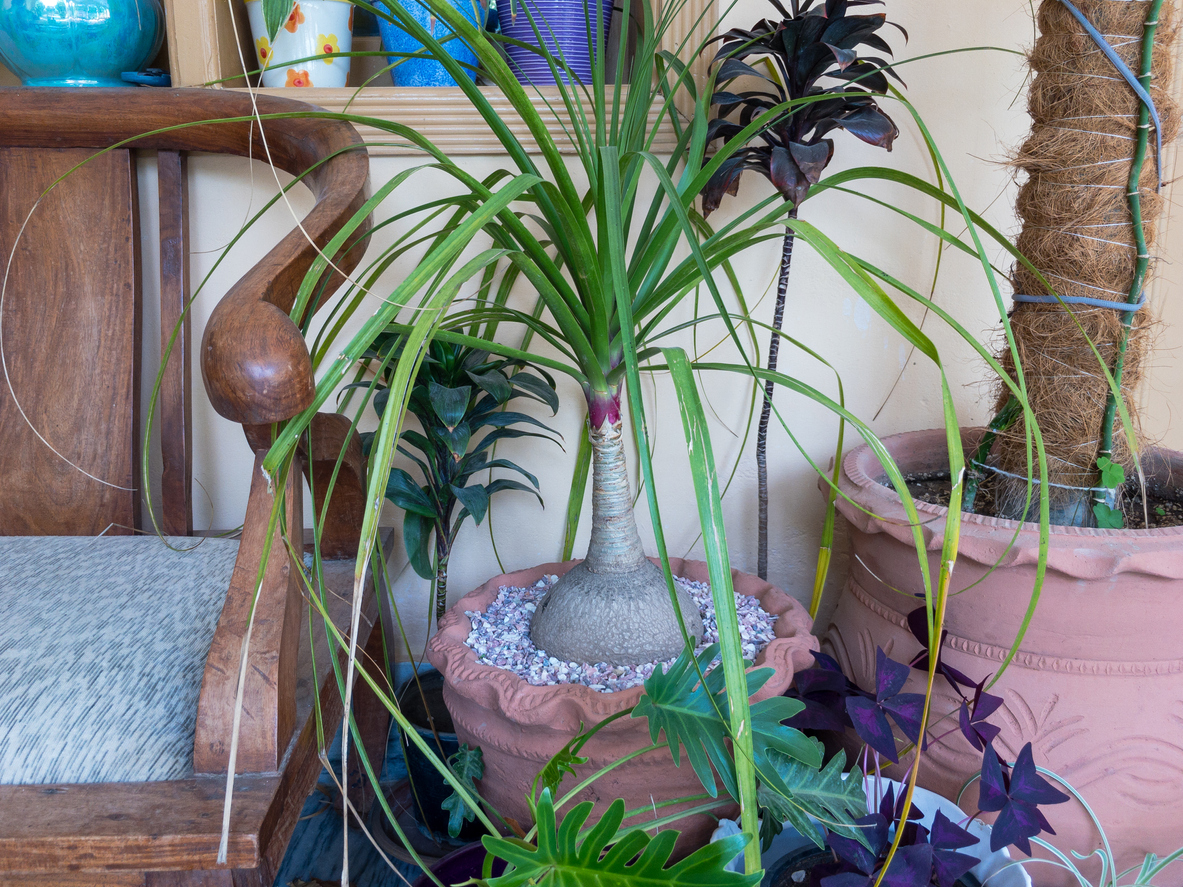
FAQs
The following questions and answers can give you some quick hints on how to care for ponytail palm. For more extensive information, consult the article above.
Yes, ponytail palms don’t require much water, fertilizer, or other attention.
Brittle brown tips might indicate too little water or a buildup of fertilizer salts. Brown tips on yellowing leaves generally indicate too much water.
Yes, ponytail palms are actually semi-succulents rather than palms.
Looking for more low-maintenance houseplants? Check out our guides on caring for peace lily, snake plant, and spider plant.
